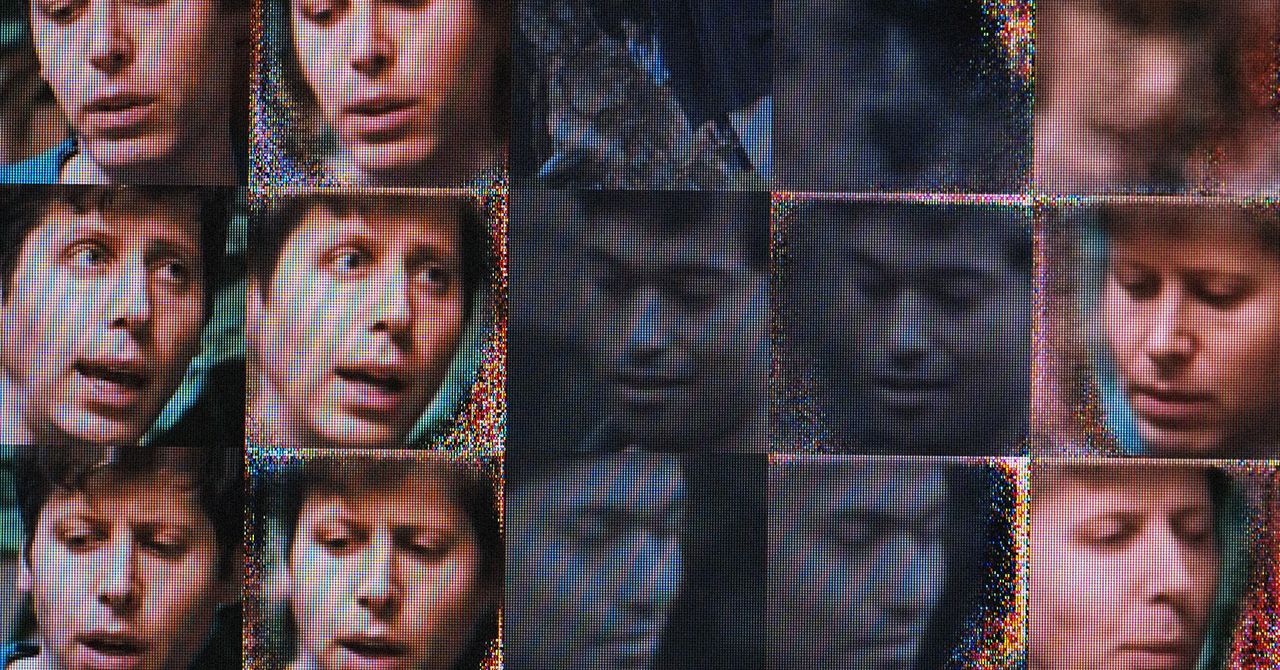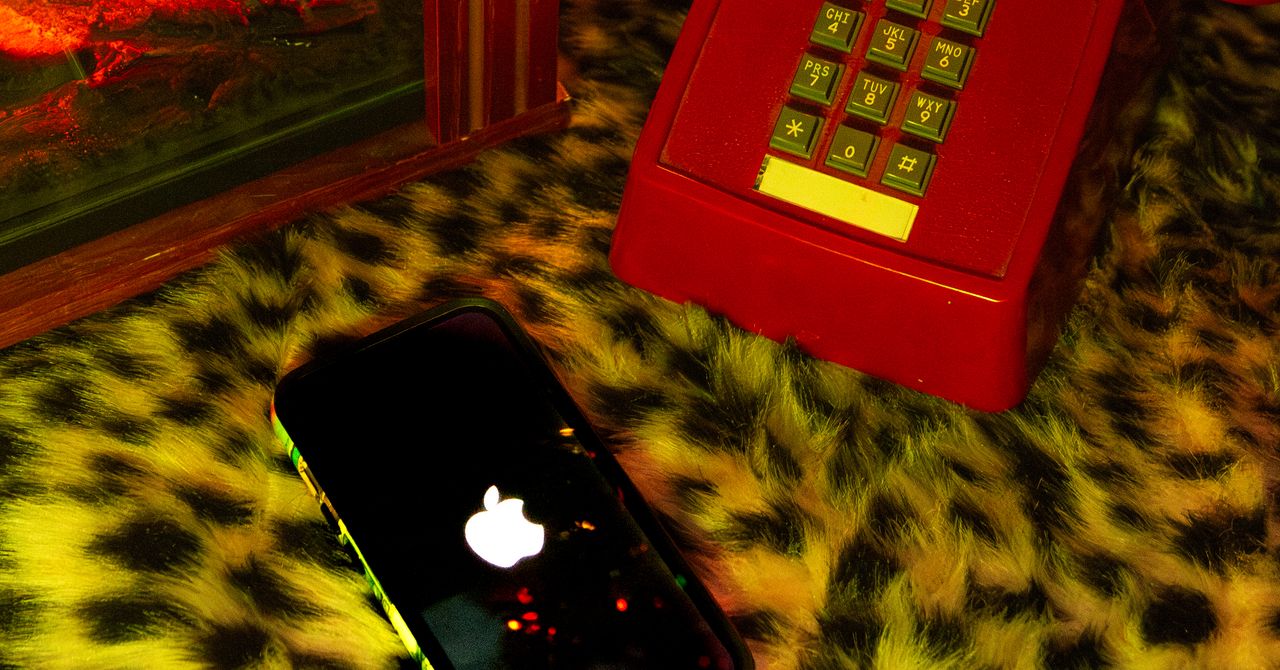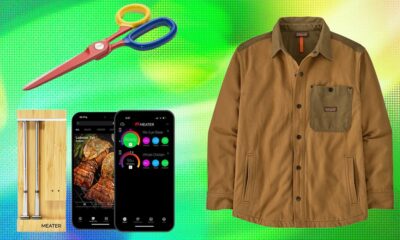Tech
What Type of Mattress Should You Choose?

This is especially applicable for areas where body weight is centralized when you’re lying down, particularly around the hips and shoulders. Pocketed coils are also meant to outperform traditional ones in the motion isolation arena, meaning that when you move around, the individual coil takes the heat motion-wise and stops the bed from reenacting a small earthquake. With the interconnectivity of traditional coils, it doesn’t take much for the feeling of movement to travel along the entire surface of the bed.
Fun fact: You do not need a box spring with a hybrid mattress. This is a recurring question I see, and pocketed coils in hybrids eliminate the need for one. Box springs were designed to give more support and elevate performance to traditional coil beds, which would align certain sections of coils to yield more support. Nowadays, you may actually void your warranty if you use a box spring with a hybrid mattress—be sure to check that fine print.
The Nolah Evolution seamlessly puts together some superb memory foam and pocketed coils, both of which counteract tension buildup for pressure points. I love it as an option for side sleepers for this reason, but it also works for back and stomach sleepers too. The coils also make it easy to move around on, which is helpful for co-sleepers.
Another solid hybrid we’ve tested is the Helix Midnight Luxe, which happens to be our top overall pick in our best mattresses guide. It also utilizes pressure-relieving foams and pocketed coils to provide targeted lumbar support.
Memory Foam
We actually have NASA to thank for this one. If you google images of those early space missions, it’s no wonder that something was needed to keep astronauts from being jostled around inside rockets; hence, memory foam was born. It’s evolved quite a bit from those initial iterations, especially when Tempur-Pedic came onto the scene in the ’80s with a vision for it to become the basis of sleep products. Today, memory foam stands in a league of its own when it comes to the unique, compressive feel.
Memory foam is more of an umbrella term for all the iterations mattress brands have come up with today, but let’s refer to the mattress manufacturing expert for this one.
“Memory foam is produced by combining liquid polyurethane with various chemicals, like polyols and isocyanates, to enhance its viscosity and density,” says Merwin. Without whipping out the periodic table of elements and giving you a science lesson in the chemical components of this material, here’s the need-to-know: These compounds form a malleable foam that holds teeny-tiny bubbles within it. How it works is, as you lie on it, your body imparts heat onto the surface, flowing into these air pockets, which in turn allows it to become softer to contour around your body.
But for the science enthusiasts reading this, Merwin’s got you covered: “The key ingredient is a polymer that creates an open-cell structure, which allows the material to respond to heat and pressure. This is what gives memory foam its signature contouring or ‘hugging’ feel. During the manufacturing process, the liquid foam mixture is poured onto a moving line, where it expands and solidifies into large foam blocks, which we call ‘buns.’ At a high level, it’s a blend of chemistry and precision that transforms raw materials into a high-quality product.”
To say it’s a natural fit for those who need pressure relief from their mattress may be a bit too on the nose, but it’s arguably the most standout feature of this material. It also lessens the feeling of movement for the most restless of sleepers, which also makes it an attractive option for couples. Arguably, the biggest issue that plagues memory foam is heat retention, since once the heat has entered into these air chambers, it turns into something akin to microscopic saunas that can make the overall mattress into a nightmare for those who sleep warm. This is where the various iterations of foam come into play, as some brands infuse elements like graphite, copper, gel, or more advanced cooling technology like phase-change materials into the foams that they use.
Three layers of foam make up the Bear Original, but its certifications and cooling cover are here to help dispel any rumors that circulate about the downsides of memory foam. You won’t find any eyebrow-raising chemicals here thanks to CertiPur-US and GreenGuard Gold certifications. Plus, you can add on a Celliant cover for a cooled-down feel.
The Nectar Premier is another memory foam option we’ve tested and liked, especially for side sleepers. Its foam layers are stacked so that you feel more pressure relief on top, but get more than enough support via a firmer foam layer at the bottom.
Latex
The same stuff that goes into tires, balloons, and sports equipment can also be used for mattresses—and it’s the good stuff, too. Latex acts similarly to memory foam when it comes to pressure relief, but is far more reactive to you moving around. Think of a rubber band snapping back into shape when released; it’s pretty dang close to that. Many brands rely on organic rubber sap to create latex as we know it, and there are two categories of latex foam you’ll usually find with mattresses: Dunlop and Talalay. These names refer to the production process and resulting product, as liquid rubber is poured into molds, torched at high temperatures (called “vulcanization” and yes, I have to resist doing Spock’s “live long and prosper” hand signal every time), and flash-frozen to retain the feel. Dunlop is a firmer latex foam, and hence, firmer feel. Talalay yields a more plush feel. Latex is generally pretty even-keeled when it comes to temperature, too, keeping heat from accumulating within your mattress to maintain a nice, room-temperature feel.
WIRED reviewer Scott Gilbertson has applauded the organic latex construction of the Birch Luxe Natural, citing great support for the lower back region and good temperature regulation.
Smart Mattresses/Adjustable Beds
The mechanics behind smart or adjustable mattresses involve air chambers that can inflate or deflate on command, letting you adjust your firmness level via controller or remote control (depending on the model or brand).
Features can vary among brands, especially depending on whether you opt for the brand’s base as well. By itself, a smart mattress can go firmer or softer at the touch of a button, and some models may be composed exclusively of foam layers over an air-chamber core. In the case of the Sleep Number P6 mattress, which I happen to be testing at the moment, there are zoned mini air chambers beneath the cover that instantly respond to high-pressure areas and adjust support levels accordingly.
Tech
A Filmmaker Made a Sam Altman Deepfake—and Got Unexpectedly Attached

Director Adam Bhala Lough didn’t set out to make a documentary about a digital simulacrum of Sam Altman.
But after about 100 days of texting and emailing the OpenAI CEO for an interview—with no response, he claims, and with financiers hounding him to make good on his original pitch—Lough was at his wit’s end.
He’d exhausted just about every angle. “Once I reached that point, I gave up and I pivoted to gate-crashing OpenAI,” he says. Though he’d employed a similar tactic in his Emmy-nominated 2023 documentary Telemarketers—a chronicle of industry-wide corruption in the telemarketing business—it wasn’t a filmmaking style he felt all that comfortable with. “It was a fortress. I was able to slip through the gate, and immediately security grabbed me and physically removed me from the premises.”
So begins Deepfaking Sam Altman, Lough’s portrait of how AI is reshaping society and his quest to talk to the man behind it. When his original plan fell through he drew inspiration from Altman himself. “The Scarlett Johansson controversy erupted,” he says. In 2024, the actress publicly called out OpenAI for seeming to copy her voice for its new AI voice assistant Sky. “It was at that point where I got the idea to do the deepfake.” (In a May 2024 statement, Altman apologized to Johansson and said Sky’s voice was “never intended to resemble” hers.)
What originally starts out as a simple voice clone balloons into a full deepfake of Altman called Sam Bot, which Lough travels to India to have created. This being a Lough film, though, nothing goes according to plan. Without spoiling too much, Sam Bot eventually becomes its own entity, and the film takes an even stranger—and revelatory—dive from there. “There’s parallels between this movie and Terminator 2: Judgement Day, but there’s none of the violence,” he says. Lough grew up during what he calls the “AI 1.0 era.” His obsession with James Cameron’s Terminator 2 was a major influence on his craft.
Deepfaking Sam Altman, which is based partially on the New York Magazine story casting Sam Altman as the Oppenheimer of our age, features commentary from former OpenAI safety engineer Heidy Khlaaf, who tells Lough, “We’re starting to see OpenAI dip its toes in military uses, and I cannot imagine something like Dall-E and ChatGPT being used for military assists. That really scares me, given how inaccurate those systems are.”
Tech
Phone Updates Used to Be Annoying. The Latest iOS Is Awful

I come from a long line of Luddites. My grandmother special-ordered her Toyota Camry with crank windows because she was convinced it was “one less thing that will break.” My father refused to upgrade our six-CD stereo system even though the eject button wouldn’t open and it could only play the first CD he ever put in it. The Traveling Wilburys Vol.1 was the soundtrack to our family dinners for a decade. As for myself, I only switched to a smartphone in 2013, when it would’ve cost about the same amount to repair my flip phone.
Now I am the same as anyone reading this. My phone is my toy and my toil, the first object I touch upon waking, the spackle to my spare minutes, the inanimate partner in our shared lie, which is that it works for me and not the other way around. Mostly, I accept this. But with the latest iOS, released last week, revolt is in the air.
Tech companies are accustomed to a certain amount of kicking and screaming after foisting new interfaces on the public. You can’t please all of the people all of the time, especially when “all of the people” is in the billions. But ask your friends—or Google or Reddit or Bluesky or ChatGPT—about the operating system update, and you will be swept away in a river of anger. “This is like foundationally bad,” author and musician John Darnielle replied on Bluesky to someone who agreed with his original tweet (about the poor photo-cropping function). One Reddit thread was posted under the headline “New iPhone update made me so overwhelmed, I ended up throwing my phone.” The subsequent post does not specify where the phone was thrown or at whom, but I have some suggestions. One wonders at what point a company’s petrification of obsolescence risks becoming a self-fulfilling prophecy. Ask yourself: Is this good for the phones? Normally, I’d be curious about the hissy-fit metrics inside Silicon Valley, about when public upset gets severe enough to become private data. But right now, I have my own problems.
I downloaded Apple’s new iOS 26.2 last week because I am a trained circus seal who will press any button presented to me. I came home late from a holiday party, agreed to the latest iOS almost by accident, and woke up to a new world. There’s something very A Thief in the Night about any new operating system, but in this case, the complaints, some witnessed, some personally experienced, are intense. Here is a partial list: the slow speed (every action takes twice as long), the animation of text bubbles, the incongruous mix of sensitivity and imperviousness to touch, the swipes to nowhere, the difficulty posting downloaded photos, the fact that almost nothing is where you left it (search fields, files), the unsolicited status sharing regarding dwindling battery life (“24m to 80%”), the lack of visual contrast, the screenshot fussiness, the requirement that users drive up to a mansion on Long Island and whisper “Fidelio” in order to toggle off the “Liquid Glass” function. You have to admit: It’s a little funny to get a transparency feature from a tech company.
Given my history, I tend to assume most technological snafus are my doing. I’ve tried to wind back what aspects of this iOS I can, assuming the veil of frustration will lift eventually. Ideally, I will not have to mentally downgrade this pricy device to a flip-phone. But in the meantime, the widespread nature of other people’s indignation has given me a perverse sense of community.
Take this battery-life business. I work from home, a privileged charging position. Yet I too have noticed my battery leveling threats. The iOS seems self-aware: The lock screen photo now fades by default, in order to save power. You have to do some toggling if you want to gaze at your kids with the instantaneousness to which you are accustomed. Also, like all of Reddit, I do not take kindly to the idea that the solution to my woes is to turn off my device and turn it back on (have you tried looking for your shoes in the closet?). Or that I should check my storage. Ha! I have a year-old phone with enough storage to choke a horse. This is not because I’m directing independent films. It’s because I like my photos and text exchanges where I like my martinis: in my hand. I’m a writer. Two of my favorite things in this world are transcripts and being right, on the spot.
Alas, my trusty research assistant doesn’t feel so trusty right now. The new iOS is like getting a present from the relative who knows you the least. Except worse because your phone knows you quite well. So when it presents you with the touchscreen version of an ill-fitting, bug-ridden, ugly sweater and says, “I saw this and thought of you,” it creates revulsion and frustration. People don’t enjoy forking over data and dollars in exchange for annoyance, in exchange for having to sound, well, like Luddites.
Historically, Luddites were 19th-century textile workers who eschewed new machinery (partially for financial reasons), thus becoming symbolic of impotent resistance to progress. But is this progress? It doesn’t feel like it. Believe me, there’s no glory in identifying as inept. The modern Luddite is just as impatient as the rest of the population, just as concerned with wanting things to work well or, yes, better. Which makes me think twice about my grandmother and her car. I’m pretty sure the woman knew how to press a button. She didn’t special-order crank windows because it was one less learning curve for her, she ordered them because it was one less learning curve for the machine. She would’ve gone with whatever was sure to work. All she wanted was for the fucking windows to open.
Let us know what you think about this article. Submit a letter to the editor at mail@wired.com.
Tech
The Lovense Spinel Is the Mini Sex Machine to Get

It made the experience very realistic to my needs: start slow, work my way up, then, if I’m feeling it, go for turbo. Admittedly, when you have the Spinel on turbo, you’re likely to have flashbacks to when Carrie Bradshaw was subjected to such aggressive jack rabbit sex that she couldn’t stand up straight at Charlotte’s wedding. However, because the vaginal muscles create resistance when it’s inside, turbo mode was quite pleasurable, especially because I used a lot of lube. You absolutely want to lube up for Spinel.
What’s also great about this dildo is that you can slide on the clitoral stimulator, so while you’re enjoying proper thrusting, at the speed and intensity you like—there are three levels and four patterns—your clitoris is also getting its fair share of stimulation.
When you’re ready to swap out the heating dildo with its epic amount of thrusts per minute, you can then move on to the G-spot attachment. While some internal arms have a slight curve to stimulate the G-spot, this one has a far-reaching, deep curve to it, meaning if you’ve struggled to find your G-spot in the past, you can’t miss it with this attachment. You can also slide on the clitoral stimulator here, too, if you’re in the mood to hopefully score a blended orgasm.
Like all Lovense products, the Spinel comes with an app that isn’t difficult to use, but with all the options, including speed, intensity, and temperature, it became a little project to explore the different features each time I opened it. I don’t often use a sex toy’s app all that much, but for this toy, it makes sense. It would be uncomfortable to control it entirely by hand, so the app feels necessary. Just be prepared to take some time to learn how it all works.
Not a Quick Romp
The Spinel takes time to put together, figure out, and decide on not just attachments, but how you want to use them. It can be a handheld device, placed on a flat and secure surface to make use of the suction cup feature, or its handle can literally turn it into a gun-shaped dildo that you can use on yourself, although it’s not particularly comfortable to hold, so it’s best used with a partner.
Courtesy of Lovense
When you use the suction cup, you’ll want to explore different flat surfaces to ensure it’s super-secure, to avoid a precarious situation. If you have roommates and thin walls, and don’t want people hearing your sex toy doing its thing, that’s also something to consider. While there’s no shame here, you don’t want to make other people uncomfortable with the sounds that transpire.
If you love a sex toy that’s going to do the majority of the work for you, heats up, and has long battery life—it takes about 2.5 hours to charge, and offers about four hours of playtime—then the Spinel might be your next favorite toy. It’s not cheap, but it’s worth the splurge.
-

 Business5 days ago
Business5 days agoHitting The ‘High Notes’ In Ties: Nepal Set To Lift Ban On Indian Bills Above ₹100
-

 Politics1 week ago
Politics1 week agoTrump launches gold card programme for expedited visas with a $1m price tag
-

 Tech1 week ago
Tech1 week agoJennifer Lewis ScD ’91: “Can we make tissues that are made from you, for you?”
-

 Business1 week ago
Business1 week agoRivian turns to AI, autonomy to woo investors as EV sales stall
-

 Fashion1 week ago
Fashion1 week agoTommy Hilfiger appoints Sergio Pérez as global menswear ambassador
-

 Business1 week ago
Business1 week agoCoca-Cola taps COO Henrique Braun to replace James Quincey as CEO in 2026
-

 Sports1 week ago
Sports1 week agoPolice detain Michigan head football coach Sherrone Moore after firing, salacious details emerge: report
-

 Tech1 week ago
Tech1 week agoGoogle DeepMind partners with UK government to deliver AI | Computer Weekly






















